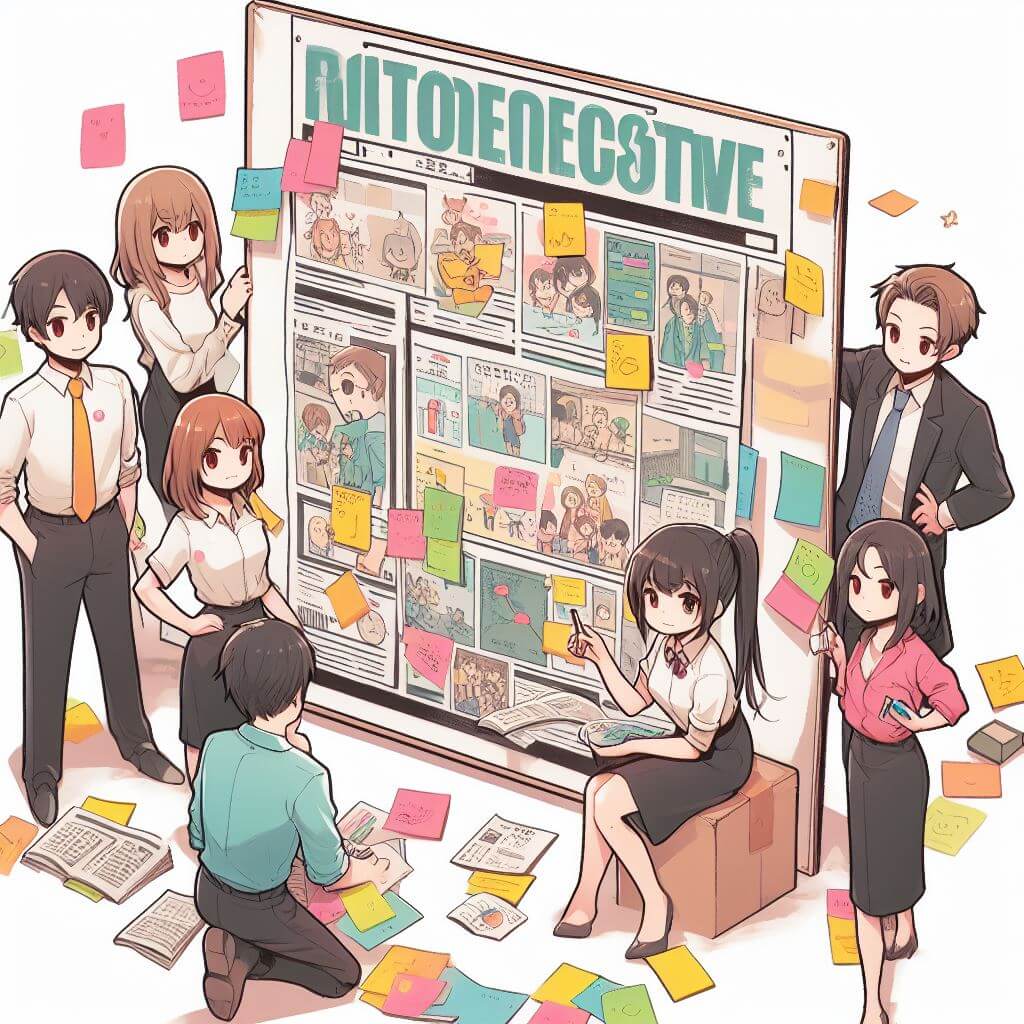Scrum Inc.認定スクラムマスター「LSM(現RSM)」になったので紹介と合格体験を記してみた

はじめに
my route開発Gの木下です。
普段はモバイルアプリ、フロントエンド、バックエンドを跨ぎ、PoCで先行開発を行っています。
今回は、認定スクラムマスター研修を受講する機会をもらい、無事に試験に合格し、LSM(現RSM)の資格取得しましたので、その経験をまとめていきます。
LSMとは
今回取得した「LSM(現RSM)」についてですが。LSMは、Scrum Inc.の認定資格で、Scrum Inc.認定スクラムマスター「Licensed Scrum Master(現Registered Scrum Master)」になります。Scrum Inc.認定スクラムマスター研修を受けた後、試験に合格すると貰える資格です。
スクラムマスターの認定団体は複数あり、それぞれで資格の名前が異なります。
| 名前 | 認定団体 | URL | 費用 | ライセンス更新費用 |
|---|---|---|---|---|
| LSM、Licensed Scrum Master、認定スクラムマスター | Scrum Inc | https://scruminc.jp/ | 200,000円 / 税抜 | $50 / 年 |
| CSM、Certified Scrum Master、認定スクラムマスター | Scrum Alliance | https://www.scrumalliance.org/ | 300,000円 / 税込 | $100 / 2年 |
| PSM、Professional Scrum Master、プロフェッショナルスクラムマスター | Scrum.org | https://www.scrum.org/ | $150 | なし |
[参考:https://www.ryuzee.com/faq/0034/ ]
LSMは、2日間のコースで講義とワークショップが含まれた内容でした。このコースを修了することで、受験資格をもらうことができます。
資格取得後は毎年の更新が必要となり、$50と更新時の試験の合格が必要になります。そのため、継続するかを検討する機会が毎年あります。
なぜ受けたのか
KINTOテクノロジーズは、先端なWeb企業の組織を目指し、日本製造業としての文化・風土の足かせとなる部分を変え、ベンダーロック剥がしやレガシーシステムの改修、業務フローのシステム化を行うなど、現在進行系でDX化を進めています。
進めている中で、手法としてアジャイル開発を選択できる機会も多くなってきました。
自分の所属するグループも、アジャイル開発を選択して進めています。その中で、上長からスクラムマスター研修を薦めてもらいました。
多くの小さい規模の開発チームと同様に私が所属しているmy routeチームでもチームのメンバーの少なさから、プロダクトオーナーがスクラムマスターを兼任している現状でもありました。
薦めを受けた後に、友人や知り合いにスクラムマスターと開発者を兼任しているチームの話を多く聞き、少しずつ興味を持ちました。
再度、上長と会話し以下の考えを持ったため、受講することを決めました。
- スクラムマスターを行うに当たり必須のものでは無く、無くても行うことは問題ありませんが、これまで体系的に学ぶことをしていないこともあり、良き学ぶ機会にできる
- スクラムやアジャイルを進めるに当たり、スクラムの人脈ネットワークの構築を行うことができる可能性
- 例えば、セミナーの中で弊社と同じような組織課題を抱えた会社の人と、進め方について情報交換できるのかもしれない
- 開発者の目線でも、スクラムマスターの考えや気持ちを学ぶことは、動き方を知る上でメリットが多い
LSMを選んだ理由
資格の取得は目的ではないため、PSMは選択肢にありませんでした。
最初は、社内の人から知名度のあるCSMの方を教えてもらっていましたが。
別の社内の人からスクラムのコミュニティーネットワークを構築できるかもしれないとLSMお勧めしてもらい、またトヨタグループのTRI-AD(現ウーブン・プラネット・ホールディングス株式会社)が導入をしていたことからグループとしての相性が良かったことで、社内における信頼感が増してLSMを選びました。
事前知識
研修受講前の知識量としては、SCRUM BOOT CAMP THE BOOKとスクラムガイドを読み終えた程度です。
また、経験値としては、かっちりとスクラムを取り入れた組織で働いたことはなく、アジャイルをふわっと取り入れているチームで働いたことがある程度になります。
研修でやったこと
研修はZoomを繋いでのオンラインでした。
参加者をいくつかのチームに分けて進めるワークショップを交えながら、講義を進めていく感じでした。
研修の前日に、以下の内容を含んだメールが届きます。
学習内容としては、スクラムマスターというものについて、歴史を含め、何をすべきなのか、そのためにどういう行動をすべきなのかを、学問的に深く学ぶ内容でした。
メンバー編成については、研修開始直後にチームビルドのワークが行われ、初めてそこで一緒にワークを行うメンバーを知ることになります。
何名か会社の同僚と一緒に受講しましたが、なるべく同じ会社、近い業種の人と組合わさらないようにと気配りがあり、自分のチームでは、全く別業種の方と組むことができました。
そのため、日々の業務の中では得られない感覚と知見に触れることができました。
進め方は、学習ステップが1つ終わるたびに、座学からワークに移って問題文が出され回答or実践する形で、説明した内容を理解するように進みます。
学習する内容はボリュームがあり、個人的にはワークよりも講義が長いと感じることが多かったです。
しかし、話を聞いていないとワークで何もできなくなるため、集中力を保つことが大事な2日間でした。
試験について
資格試験は、コース修了後すぐに受験可能でした。
回答時間は無制限ではあるものの、研修の内容、テキストとスクラムガイドを理解していないと回答できない、理解の深さを問う問題が多いと感じました。
アジャイルやスクラム未経験の人には、少し辛いところもあるかもしれません。
ですが、1回までは再受験が無料ですぐ受けられるらしい(無事に1度目で合格したため、再受験については説明で聞いた話をそのまま書いています。)ので、合格のチャンスは多いです。
まとめ・感想
チームのメンターやメンバーは、明るくてノリが良かったこともあり、終始ワークショップは暖かい空気で進みました。
ワークショップを通して普段接しない業界のメンバーと進めていけるのは新鮮で、特にとても良かったです。
しかし、リモートであるためインタラクションが少なく、打ち解ける速さや深さは、実際に会って行うとでは雲泥の差がありました。
また一緒に受講した同僚は、1日目はあまり打ち解けあえず冷めたまま進んでいたようで、自分のチームのやり取りを聞いて、「なんて羨ましい…!」とこぼしていました。
メンバーやトレーナーの質によっては、上手くチームビルドができないというガチャ要素があります。
(同僚の場合は、2日目に「あれからすごく話すようになった!やっぱりアイスブレイク大事!!」と言っていたので、無事に打ち解け合えたようです。)
研修の内容に関しては、スクラムマスターというものに対して、学問的に深く学ぶ内容でした。
業務で困っているスクラムの取り入れられない組織での解決方法などを学ぶものではないため、普段の業務での困難についての銀の弾丸を直接に得るものではありませんでした。
研修を通して学問的に学んだものを、チームや組織、仕事にどのように活かすのは自分たち次第になります。
そのため、学習したもの全てをそのまま組織に取り込めて、上手く活かせる会社は稀なので、個々の会社それぞれが、何が合うのかを試し実践を繰り返していくのが大事になっていきます。
可能ならば、ワークで知り合ったチームメンバーでもいいですし、過去の参加者など、外部の人と共有し合える機会を持てる場や機会とか、運営団体のイベントなどで用意があれば、もっと知見が広がり更に良いと思いました。
いざ自身の会社に活かすことを考えると
ワークしたチームメンバーに話を聞いたところ、他社もスクラムを活かしにくい環境で、また近しい課題感を抱えているところも多くありました。
それらを踏まえ、以下3パターンの適正があるのではと考えています。
- 作るものが決まっている場合は、スクラムよりウォーターフォールが適する
- 作るものが決まっておらず、やりながら作り込む場合は、スクラムは適する
- サービスを高めようと業種の垣根を超えて、チームが組める風通しが良い場合、スクラムは適する
自社で学びの内容の効果を最大限に発揮するには、考えた適正のように実践しやすい環境から整える必要がありますが、いきなり整えることは一筋縄ではいきません。
時折り完成の定義が崩れてしまうプロダクトインクリメントを正したり、社内の点々と散らばった小さなスクラムチームが繋がる取っ掛かりを探してScrum of Scrumを目指したりと、少しづつ取り組むことで現状より改善に向けていければを結びの言葉にします。
その後について興味を持たれましたら、以下の記事をご一読いただければ幸いです。
1年が過ぎてScrum Inc.認定スクラムマスター「RSM」のライセンスの更新試験を受けたので紹介と体験を記してみた
関連記事 | Related Posts

How an iOS Engineer Became a Certified Scrum Master

Scrum Inc.認定スクラムマスター「LSM(現RSM)」になったので紹介と合格体験を記してみた

Reflecting on Renewing My Scrum Inc. Registered Scrum Master (RSM) License: My Exam Experience One Year Later

Which Agile Milestone Are We at Now?

Transforming Development Methodologies: Our Journey from Waterfall to Agile in Crafting the Prism Japan App

Introduction to Agile SaaS: The Secrets to Achieving Maximum Results Quickly with Minimal Workload
We are hiring!
【フロントエンドエンジニア(リードクラス)】FACTORY EC開発G/東京・大阪
TOYOTA UPGRADE FACTORY / LEXUS UPGRADE FACTORYについて自動車のソフトウェア、ハードウェア両面でのアップグレードを行う新サービスです。
【クラウドエンジニア(クラウド活用の推進)】Cloud Infrastructure G/東京・大阪・福岡
KINTO Tech BlogCloud InfrastructureグループについてAWSを主としたクラウドインフラの設計、構築、運用を主に担当しています。
